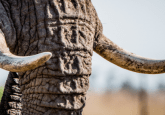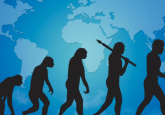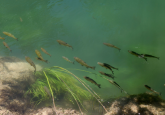Mosaic evolution of goat domestication
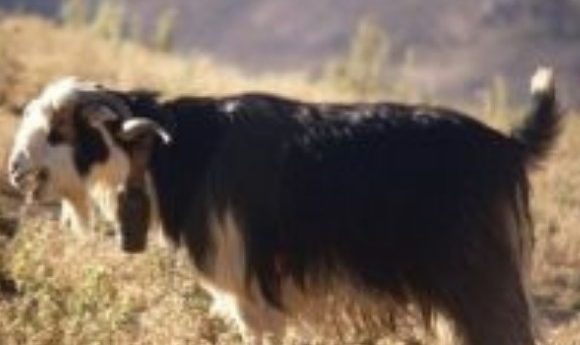
Genetic flow and farmer selection across populations 10,000 years ago in the Fertile Crescent led to a mosaic of goat evolution.
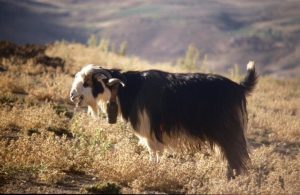
This is a Zagros goat. Credit: Marjan Mashkour
Researchers from Trinity College Dublin (Ireland) have sequenced ancient bones from the Fertile Crescent where goats first underwent domestication. Their results, published in Science, show that there is a 10,000-year history of gene flow between wild and domestic populations and local farmer selection for desirable traits that form a complex picture of mosaic evolution.
The Fertile Crescent is often thought of as the cradle of agriculture and civilization, its geographic location providing optimal conditions for human advancement. Domestication of livestock has always been a major component of this progress, with goats providing a crucial source of milk, meat and hide for humans.
However, understanding this domestication is difficult as years of genetic mixing, selection and migration lead to a mixed bag of ancestry.
“Just like humans, modern goat ancestry is a tangled web of different ancestral strands. The only way to unravel these and reach reliably into the past is to sequence genomes from actual ancient animals; a kind of molecular time travel,” said professor of Population Genetics and ERC Advanced Investigator at Trinity College Dublin, Dan Bradley, who led the project.
The team used genetic data from 80 goats and managed to chart the patterns of their domestication. They revealed a surprisingly large amount of genetic differentiation between the goats across the area.
Joint first author, Pierpaolo Maisano Delser, explains: “Goat domestication was a mosaic rather than a singular process with continuous recruitment from local wild populations. This process generated a distinctive genetic pool which evolved across time and still characterizes the different goat populations of Asia, Europe and Africa today.”
The results reveal that ancient farmers were just as selective in their farming as modern ones, as first author Kevin Daly reports:
“Whole-genome sequences from the past allowed us [to] directly analyze some of the earliest goat herds. We found evidence that at least as far back as 8000 years ago herders were interested in or valued the coat color of their animals, based on selection signals at pigmentation genes.”
This study reveals the earliest discovery yet of the domestication process, revealing the underlying processes behind agriculture and its effect on human civilization.

